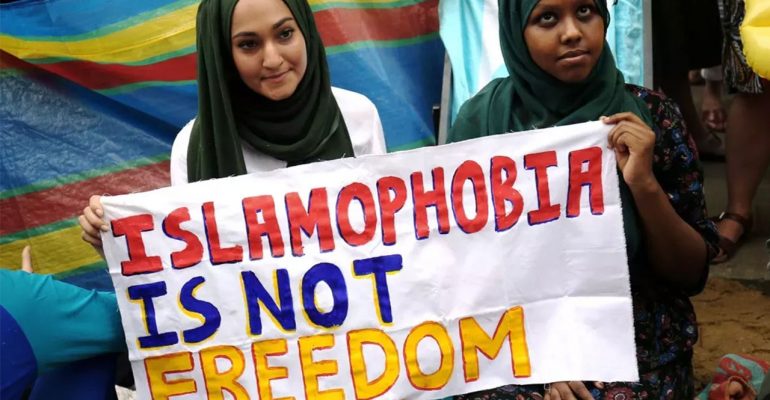Islamophobia and Proximities to Whiteness: Organizing Outside of The Brown Muslim Subject
October 23, 2023 2024-03-17 20:36Islamophobia and Proximities to Whiteness: Organizing Outside of The Brown Muslim Subject

Islamophobia and Proximities to Whiteness: Organizing Outside of The Brown Muslim Subject
Article: “Islamophobia and Proximities to Whiteness: Organizing Outside of the Brown Muslim Subject”
Authors: Nadiya N. Ali, Lucy El-Sherif, and Hawa Y. Mire
Published in: ReOrient, Vol. 8, No. 1, pp. 78-100 (23 pages)
Publication Date: September 9, 2023
Publisher: Pluto Journals
Abstract:
The existing Islamophobia literature has come to illustrate how the Muslim subject “can at a moment’s notice be erected as [an] object of supervision and discipline” (Morey and Yaqin 2011: 5–6). In the popular imagination, Muslimhood has come to stand for an undifferentiated culturally alien oriental subject defined through the prism of racialized violence and irrationality. Although much of the anti-Islamophobia efforts–academic and community-based – work to combat the reductiveness of a universalized Muslim figure, these efforts tend to uncritically take up the brown Muslim figure as the starting point of inquiry, thereby further reifying the homogenizing racialization of dominant discourses. This article opens up the possibilities to expand thinking on the lifeworld of Islamophobia by addressing the erasure that happens with this homogenizing approach to Islamophobia. In particular, The Authors consider the dialogical nature between the operational life of Islamophobia and the differing proximities to whiteness our intersectional subject positions make available. And in turn, how these availabilities come to shape the experience of Islamophobia is a prime focus of analysis. The Authors ask: how does the systemic demarcation of Muslim subjectivity, across racial, ethnic, class, regional, and ideological lines, interact with how Islamophobia is experienced and operationalized? Leveraging an auto-ethnographic approach, They provide first-person narratives of Islamophobic encounters from our respective geopolitical and social locations to deconstruct and delineate an intersectional understanding of Islamophobia.
Read the full text Here.
Source: JSTOR








